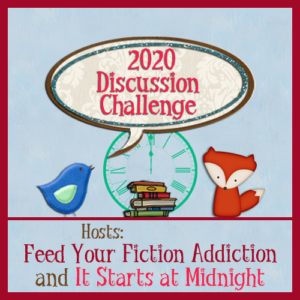
Thanks to these two bloggers for sponsoring the 2020 Blog Discussion Challenge:
- Nicole at Feed Your Fiction Addiction
- Shannon at It Starts at Midnight
You can join the discussion challenge at any time during 2020 by clicking on either link above.
As a subgenre of the mystery or detective-fiction genre, the locked-room mystery, which originated in the mid-nineteenth century, has long fascinated both writers and readers. But at least one critic asserts that the format has outlived its usefulness and should be scrapped. However, five recent novels demonstrate how writers continue to find ways to apply the traditional formula to create works that continue to challenge and entertain readers.
The locked-room mystery presents a story in which a crime, usually a murder, has been committed in a setting that seemingly offers no way for the culprit to exit the crime scene. Imagine a corpse found inside a room with no windows or method of entry and exit other than a single door, which is locked from the inside. Literary historians generally credit Edgar Allan Poe’s 1841 story “The Murders in the Rue Morgue” as the first such story.
Nearly 100 years later, in 1939, Agatha Christie first published her own version of the locked-room mystery, now known as And Then There Were None. In her story several characters are summoned to a mansion on a small rock island with no other dwellings or inhabitants. The only way to get to the island is by catching the only row boat available at a nearby coastal village. A bad storm blows up and prevents the small boat from sailing across the channel over the weekend. Meanwhile, on the isolated island, the guests turn up dead, one by one.
Agatha Christie went on to perfect her own variant of the locked-room mystery, the country-house mystery. In these stories, several characters assemble in a remote country house that is then cut off from the outside world by some type of storm involving either giant snow drifts, road-blocking huge fallen trees, or washed-out bridges. The country-house mystery is also called a closed-circle mystery, since none of the characters can leave and no new characters can arrive; the villain must therefore be one of the assembled guests.
Prolific mystery author and critic Christopher Fowler has argued that the modern age of instant communication and unlimited information access forces mystery writers to up their game:
Gone are the days of the snowed-in, bridge-down, lines-out country house murder, where everyone dutifully assembles in the library to unveil the killer.
Christopher Fowler
Yet these five recent novels demonstrate how writers are finding new ways to use the locked-room mystery formula to create suspenseful, satisfying novels.
The Girl with the Dragon Tattoo by Stieg Larsson
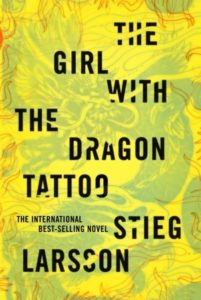
In Larsson’s 2005 novel, wealthy Swedish industrialist Henrik Vanger hires researcher and journalist Mikael Blomkvist to dig into the disappearance of his niece, Harriet, more than 40 years earlier. Blomkvist enlists the help of Lisbeth Salander, a brilliant computer hacker but a troubled young woman now at the mercy of the Swedish welfare system because of the government’s need to protect the identity of her Soviet-defector spy father.
Both the character development and the plotting of this novel are so complex and enthralling that it’s easy to forget that the opening situation, the circumstances of Harriet’s unexplained disappearance—on a day when an accident closed the bridge connecting the Vanger island estate to the mainland—is a locked-room mystery set up.
No Exit by Taylor Adams
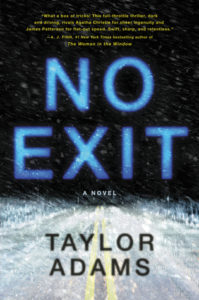
I have explained my criticisms of this 2019 novel in my review, linked above. Nonetheless, I commend Adams for undertaking the challenge of writing a locked-room mystery novel.
In a Dark, Dark Wood by Ruth Ware
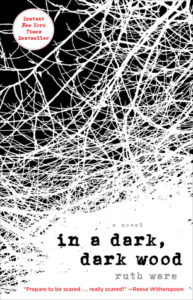
In this 2015 novel, Nora hasn’t seen Clare for 10 years, when they were teenagers and Clare orchestrated the break-up of Nora and her boyfriend, James. Then, out of the blue, Nora receives an invitation to Clare’s hen do (bachelorette party). Ware uses elements of the locked-room format to heighten tension and produce suspense in this wild ride of a gothic thriller.
The Escape Room by Megan Goldin
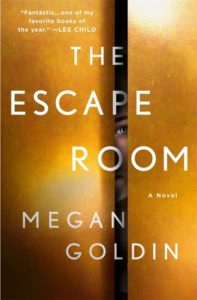
The Escape Room (2019) begins with two parallel narratives: the first-person account by Sara Hall of her job at a large, high-pressure financial firm, and the third-person look at four business associates in an elevator participating in a corporate trust-building exercise. As the two narratives alternate, suspense increases for both readers and the four people trying to figure out how to escape from the elevator.
The Lost Man by Jane Harper
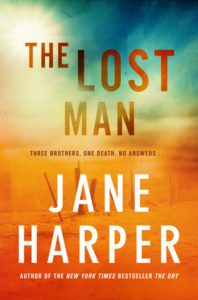
I’ve saved the best for last.
Nathan Bright returns to his family’s vast cattle station in Australia for the funeral of his brother, Cameron. Did Cameron commit suicide, or was he murdered? The authorities and the family ponder this question out where only one road leads through town and the nearest neighbors live many hours’ drive away in either direction. Brilliant Australian writer Jane Harper sets this, her third novel (2019), in the Australian Outback, the biggest locked-room on the planet.
© 2020 by Mary Daniels Brown


I enjoyed your discussion of the current status of the locked-room mystery, of which I’ve always been a fan. I never can figure them out!
I enjoyed this discussion too, Mary. This type of novel will always be popular in my opinion because there are boundaries: the story and the characters are contained. Though invariably there will be backstory – and these days, often a complicated or multiple backstory – the essential premise is comfortably familiar to us and perhaps we feel we are thus more likely to figure it out! I’m reading a locked room novel at the moment although until reading your post, it hadn’t occurred to me that of course it belongs in that genre!
Pingback: Literary Links – Notes in the Margin
It’s interesting that one of the books is The Escape Room because the title of this post immediately made me think of escape rooms. I think you’re right that this trope isn’t finished!